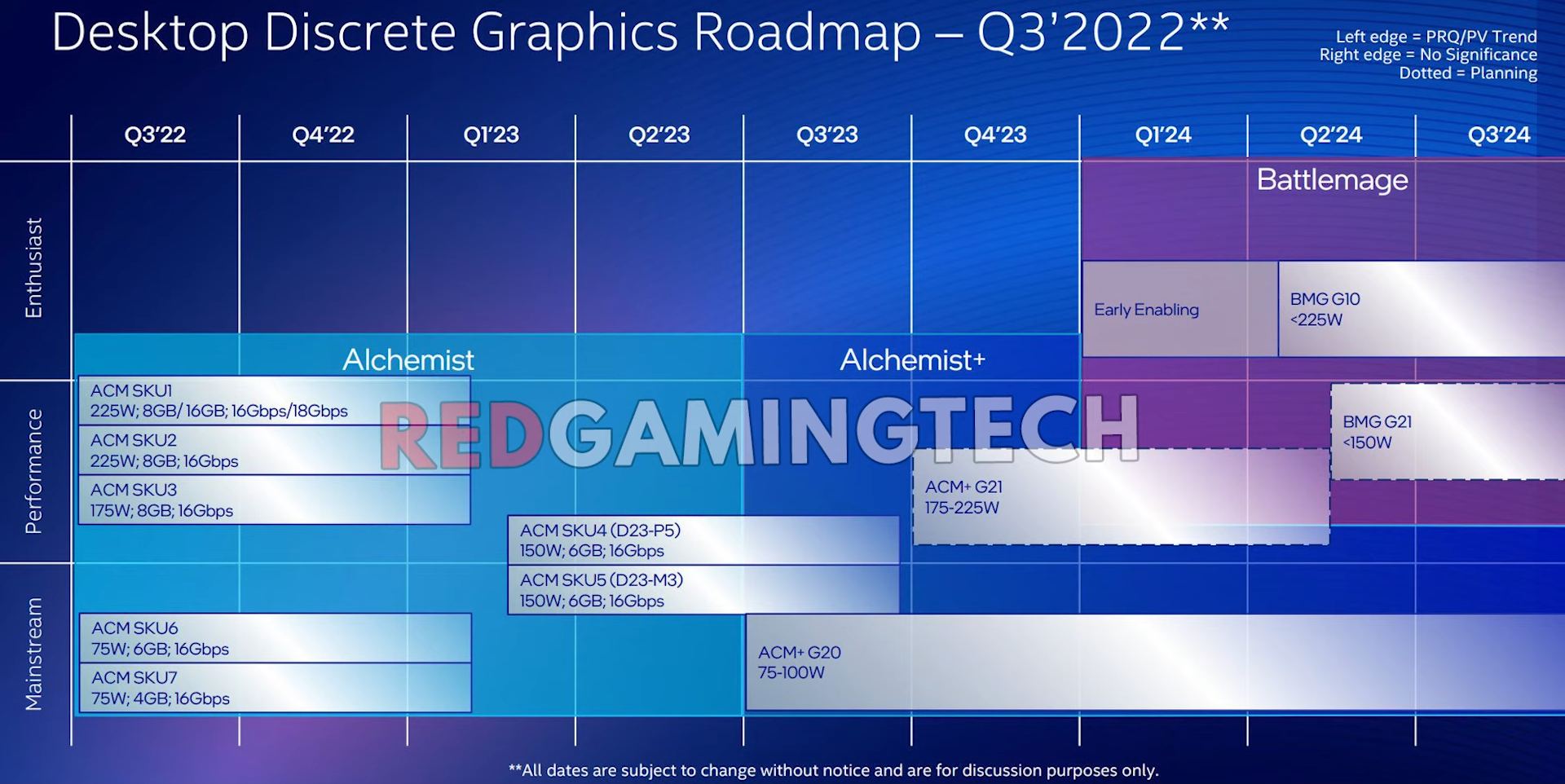Raj Koduri’s departure from Intel prompted some doubts about the future of Arc Battlemage, a generation of graphics cards that will succeed the current Arc Alchemist. I already told you that the departure of the former head of Intel’s graphics division will not change anything fundamentally, because the company has, after all, invested a lot of money and a lot of time to prepare a return to graphics. sector, and because it clearly has trying to make the investment profitable.
Intel’s Arc Battlemage has yet to be officially announced, but early rumors suggest that this new architecture could more than double the current one in raw power, which it will be built on TSMC’s 4nm node and that it will reach the market in first half of 2024That is, in a little over a year.
That release date would be a little tight, as both NVIDIA and AMD may have already completed the intergenerational update of their GeForce RXT 40 and Radeon RX 7000. Make no mistake, I’m not talking about the launch of the GeForce RTX 50. Radeon RX 8000, but from “soda” RTX 40 and RX 7000.

As for its possible specifications, a new rumor ensures that the successor to the Intel Arc A770, which will be part of the Arc Battlemage generation, will have a configuration 64 Xe core blocks, which corresponds to doubling the number of Xe cores in the Intel Arc A770. There is also talk of an increase in operating frequencies that would exceed 3 GHz for the GPU, a total of 48 MB of L2 cache and the already mentioned 4 nm node.
In terms of raw performance, it would reach a Battlemage-based Intel Arc A870 running at 3GHz 49.15 TFLOPs of performance in FP32. For comparison purposes, the Arc A770 offers performance 19.66 TFLOPs in FP32, so we would have more than double the raw energy. It is important to remember that this does not mean that the first one will offer twice the performance in games, because the performance numbers in FP32 cannot be transferred directly and linearly when we talk about games, because in the end, their performance depends on many factors, including the drivers.
According to the same source, we can expect a noticeable increase in performance in ray tracing and artificial intelligence, and it is said that the most powerful model of this new generation of graphics cards from Intel would be able to compete with the GeForce RTX 4070 Ti. This would be a significant step forward for the chip giant, which in the last generation could only slightly surpass the GeForce RTX 3060.














